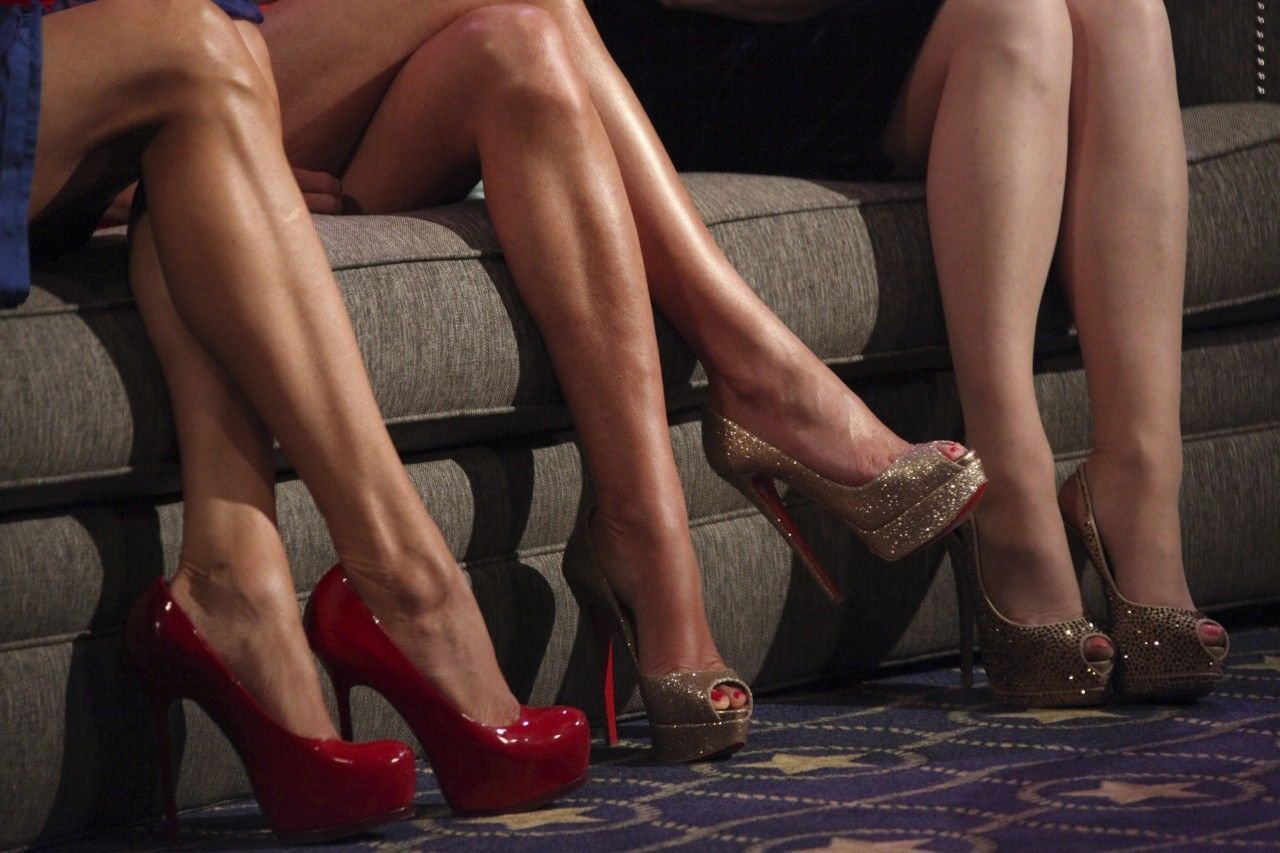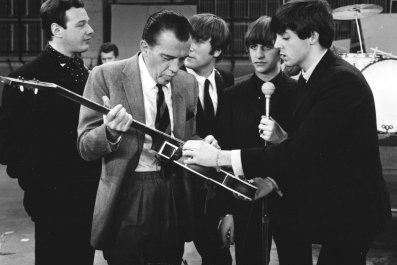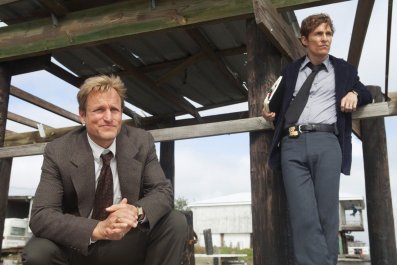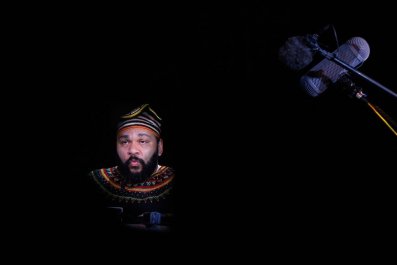Irene McGee's exit from The Real World: Seattle in 1998, the Jurassic age of reality TV, was memorable. No more than 30 seconds after she got into her friend's car to leave, Stephen Williams - a fellow housemate and constant source of conflict - rushed up and delivered a farewell smack to McGee's face now known as "the slap heard 'round the world."
That clip has been replayed countless times on reality television recap shows and news broadcasts, and now lives forever on YouTube. "It was like, the highest-rated moment in cable television that year," McGee says 15 years later, seated in her Manhattan studio apartment. "That's crazy. I'm known for being hit in the face."
Here's another crazy thing about that moment: McGee did not leave The Real World because she had Lyme disease, as the show's producers made it seem. She left because the entire operation was rigged. The show is set up to make people mean, to incite drama. Every season, it constructs a narrative faithful to conventional story arcs, but with all the trappings of water-cooler gossip.
The key word there was construct. Reality TV is fiction sold as nonfiction, to an audience that likes to believe both are possible simultaneously in life. It's entertainment, in the same way Cirque du Soleil enchants and The Hunger Games enthralls. But what are we to make of unreal realness? And what does it make of its viewers? Do they, like McGee's former housemates, mimic the medium? Do they become shallow, volatile, mean?
Building the Better Narrative
Reality TV now includes the full spectrum of Americana among its stars. The bronzed L.A. housewife who rakes in millions from her line of luxury perfume stands shoulder-to-shoulder with the Alaskan crab fisherman who spends his working hours shaking hands with death. Plot and structure may differ, but reality TV welcomes all. "The one common element in all the shows is the respect and attention given to ordinary and flawed people," says Steven Reiss, emeritus professor of psychology at Ohio State University. "It is the key value asserted by the shows."
Therein lies its fundamental allure. Its characters are fractured, and these real fractures are taken to unreal extremes. These "hyper-flawed" characters satisfy our cravings for fantasy and excitement and drama, while at the same time reminding us that we're only human. The eminent cognitive scientist Steven Pinker, for one, considers that perfectly normal.
"I think it's natural to be interested in the conflicts and exploits and shortcomings of other people," says Pinker, who penned the titanic exploration of cognition, How the Mind Works. This is particularly true for "powerful and famous people, whether they exist or don't." But as Pinker notes, the hallmark of well-told fiction, be it a Shakespearean play or seven strangers playing house on MTV, is that the audience can't tell the difference.
Sometimes this means fiddling with the cast so that they appear more like stage characters. Earlier this year, Troy DeVolld, whose reality career has spanned writing dailies for The Osbournes to co-executive producing VH1's Basketball Wives, gave an interview for the A.V. Club in which he detailed the art of constructing a narrative out of reality. "In a scene, I might have to say, 'Can you guys please have a conversation about what happened last Thursday, because I can't make sense of these two scenes without you talking about how you got from this point to this point; something happened off-camera.' "
To help create the tone and narrative line of a show, a lot of the teasing-out happens during the casting process. McGee, for instance, ditched her Real World tryout line, which was 40,000-strong and packed full of dolled up 20-somethings clutching headshots to sit under a tree in ripped jeans. (She had a midterm to study for.) "I remember they took all my friends one way for interviews," she says, "and I went the other way."
McGee is sure her flippant attitude got her selected. Producers have become so good at their job of constructing a cohesive narrative, one that imitates life - albeit, dramatically so - that the narrative ends up compelling life to imitate it. This is an important distinction. Rational adults may not need to exercise portion control, but if reality TV offers compelling entertainment under the pretense of reality, impressionable adolescents might need to be told when enough is enough. As Professor Reiss notes, drama doesn't emerge accidentally. It's intentional. But not everyone knows that.
When 'Reality' Trumps Reality
In 2011, a survey asked more than 1,100 American girls, between the ages of 11 and 17, questions about their attitudes and reality TV viewing habits. Overwhelmingly, the girls who consumed a regular diet of Jersey Shore, Project Runway, American Idol and The Hills, among other shows, were far more likely to assign greater importance to the values championed by those shows. "Of girls surveyed, regular reality TV viewers differ dramatically from their nonviewing peers in their expectations of peer relationships, their overall self-image, and their understanding of how the world works," the researchers wrote.
Girls who watch reality TV were much more likely than nonwatchers to perceive gossiping as a normal part of a relationship between girls, that it is "in girls' nature to be catty and competitive with one another," and to respond that "it's hard for me to trust other girls." They also tended to believe success requires some combination of meanness and deception. When asked if girls "have to lie to get what [they] want," girls who watched reality TV agreed 37 percent of the time; nonviewers agreed only 24 percent of the time.
Then there's the marketer's approach: a 2011 review found that pre-teens and teens who watched certain shows - including American Idol, The Biggest Loser, Jersey Shore, and The Real World - self-identified as being more popular, connected, attractive and academically successful.
Researchers have been critically investigating children's TV viewing habits since the late 1970s, but reality TV demands its own shelf. In a recent comprehensive study, entitled A Snooki Effect? An exploration of the surveillance sub-genre of reality TV and viewers' beliefs about the "real" real world, University of Wisconsin researchers Karyn Riddle and J.J. De Simone collected data on 145 undergraduates to better understand their TV-watching habits and perceptions of reality. The team separated participants according to how often they watched one of 15 popular reality shows that "follow individuals around as they experience their 'real' lives." These shows included The Hills, Jersey Shore, Laguna Beach and the various incarnations of The Real Housewives and The Real World. They were selected for their propensity "to include significant amounts of relational aggression" and because they often portray women "threatening to withdraw friendship, spreading rumors, and engaging in gossip."
The subjects were asked to estimate rates of divorce, to gauge what percentage of men and women "enjoy spreading gossip and rumors" and "could be described as over-emotional," and to take a stab at how many people belong to country clubs, cheat on their spouses or own a hot tub.
Overwhelmingly, the group of heavy reality viewers reported assumed rates far higher than those of nonviewers in all categories. Riddle and De Simone found that "heavy viewers of these shows overestimate the prevalence of discord (e.g., affairs and divorces) and an emphasis on sex (e.g., sex on the first date, having multiple sex partners) in romantic relationships."
In other words, heavy reality TV viewers tended to see the gap between a producer's rendering of reality and the real thing as being much narrower than a nonviewer would.
They're sold on the illusion.

























